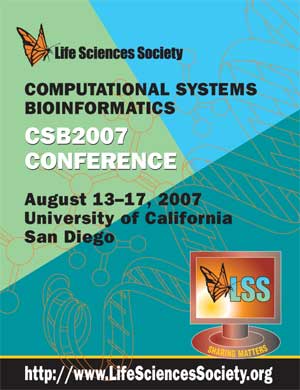Extraction, Quantification and Visualization of Protein Pockets
Xiaoyu Zhang*, Chandrajit Bajaj
Department of Computer Science, California State University San Marcos, San Marcos, CA 92096, USA. xiaoyu@csusm.edu
Proc LSS Comput Syst Bioinform Conf. August, 2007. Vol. 6, p. 275-286. Full-Text PDF
*To whom correspondence should be addressed.

Molecular surfaces of proteins and other biomolecules, while modeled as smooth analytic interfaces separating the molecule from solvent, often contain a number of pockets, holes and interconnected tunnels with many openings (mouths), aka molecular features in contact with the solvent. Several of these molecular features are biochemically significant as pockets are often active sites for ligand binding or enzymatic reactions, and tunnels are often solvent ion conductance zones. Since pockets or holes or tunnels share similar surface feature visavis their openings (mouths), we shall sometimes refer to these molecular features collectively as generalized pockets or pockets. In this paper we focus on elucidating all these pocket features of a protein (from its atomistic description), via a simple and practical geometric algorithm. We use a two-step level set marching method to compute a volumetric pocket function ø
[CSB2007 Conference Home Page]....[CSB2007 Online Proceedings]....[Life Sciences Society Home Page]